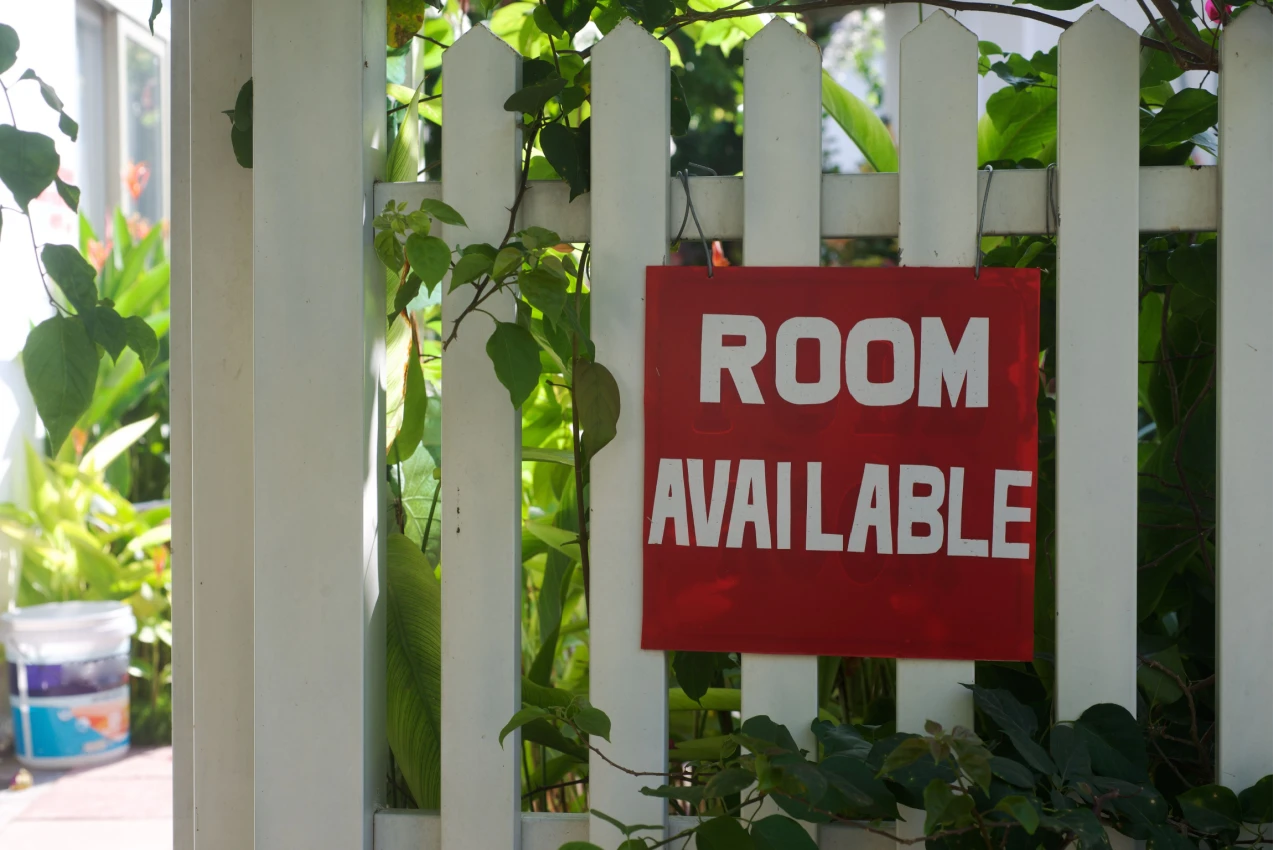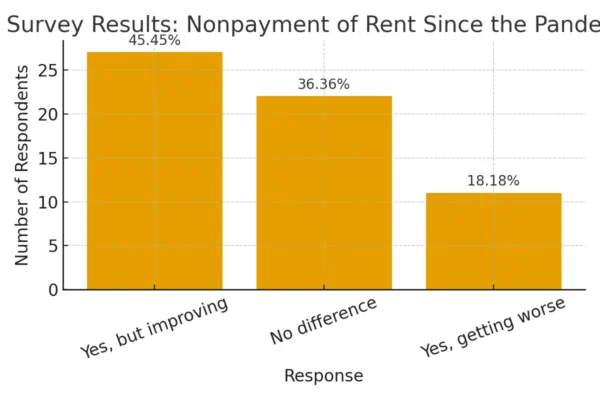How to Start Renting Rooms in Your Primary Residence

House Hacking for Beginners
Imagine having a $2,400 monthly mortgage payment, but only paying $600 out of pocket. The other three bedrooms? They’re covering the rest—plus utilities, plus extra that goes straight into a next investment property fund.
This isn’t fantasy—it’s house hacking for beginners, the strategy that turns your biggest expense into your first real estate investment without needing a massive down payment or years of experience.
Here’s what most people don’t realize: renting rooms in your primary residence isn’t just about saving money on housing. It’s about building wealth while learning the fundamentals of being a landlord with training wheels on. Living in your investment means catching problems early, understanding tenant dynamics firsthand, and building property management skills without the stress of managing a property across town.
The timing couldn’t be better. With average rent hitting $2,184 nationally and mortgage rates still elevated, demand for quality room rentals has never been stronger. Meanwhile, owner-occupants get to use owner-occupant financing (as low as 3.5% down) instead of the 25% typically required for investment properties.
Why House Hacking Works Better Than Most First Investments
Before diving into the how-to, let’s talk about why house hacking is such a powerful entry point into real estate investing. This isn’t just about cheap rent—it’s about wealth acceleration.
The financing advantage is massive. Put 3.5-5% down with an FHA or conventional owner-occupant loan instead of 20-25% for an investment property. On a $400,000 property, that’s $14,000-$20,000 down instead of $80,000-$100,000.
New investors learn while earning. Every conversation about repairs, every lease negotiation, every tenant screening decision is education they’re getting while someone else pays their mortgage. By the time they buy their second property, they’ll already have real landlord experience.
The tax benefits start immediately. House hackers can deduct expenses related to the rented portions of their home—utilities, maintenance, depreciation—while building equity that’s mostly tax-free when they eventually sell.
The key insight: House hacking is the only strategy that lets people use their primary residence for wealth building while reducing their cost of living to near-zero.
Step 1: Choose the Right Property for House Hacking Success
Not every home works well for house hacking. Investors need a property that balances lifestyle needs with rental income potential.
Ideal property characteristics:
-
3-4 bedrooms minimum (one for owner, rest for tenants)
-
Multiple bathrooms (shared bathrooms create friction)
-
Dedicated parking spaces for each tenant
-
Separate entrance options (basement apartments are goldmines)
-
Good location near employers, universities, or transit hubs
-
Properties slightly below maximum budget (leaves room for renovations)
Property types that excel at house hacking:
-
Single-family homes with finished basements
-
Duplexes and triplexes (live in one unit, rent the others)
-
Larger homes near universities or medical centers
-
Properties with accessory dwelling units (ADUs) or garage apartments
Hypothetical example: Consider a 4-bedroom, 2.5-bath house purchased for $380,000 in a neighborhood near a major hospital. Three bedrooms could rent for $800 each. If monthly costs (mortgage, insurance, taxes) total $2,400, and rent collected is $2,400, the owner’s housing cost drops to zero, plus they’re building $600+ in equity monthly.
Location strategy: Look for areas with strong rental demand but still affordable for owner-occupants. Near universities, hospitals, tech campuses, or downtown areas with good transit access. These locations command premium room rents while keeping purchase prices reasonable.
Free Rental Application
Get 20 Rental Forms for FREE, including a rental application.
Step 2: Prepare Your Home for Renters Without Breaking the Bank
Strategic preparation makes the difference between good tenants and problem tenants. Rooms should be attractive to quality renters while maintaining boundaries that protect privacy and sanity.
Essential improvements before listing:
-
Install keyed locks on bedroom doors for security and privacy
-
Ensure each room has adequate lighting and outlets
-
Add mini-fridges in bedrooms if sharing a kitchen feels too intimate
-
Create clear storage solutions (shelving, closet organizers)
-
Upgrade shared bathrooms with quality fixtures and lighting
-
Establish clear common area boundaries
Kitchen and common area setup:
-
Label shelves and fridge space for each tenant
-
Provide basic kitchen essentials but not personal items
-
Set up a cleaning schedule and post it prominently
-
Create designated storage for each person’s cleaning supplies
-
Install a key lockbox or smart lock system for secure access
Privacy improvements that matter:
-
Soundproofing between rooms (acoustic panels, weather stripping)
-
Window treatments that block light and provide privacy
-
Separate climate controls if possible (space heaters, fans)
-
Private bathroom for owner if possible
Budget approach: Allocate $3,000-$5,000 for initial setup. Focus on security, privacy, and functionality over aesthetics. Quality tenants care more about secure locks and good lighting than granite countertops.
Step 3: Set the Right Rent and Create Bulletproof House Rules
Pricing rooms correctly determines whether house hackers attract quality tenants or struggle with vacancies. Too high and rooms stay empty. Too low and they attract tenants who don’t value what’s offered.
Research local room rental market:
-
Check Craigslist, SpareRoom, and Facebook Marketplace for comparable rooms
-
Factor in included amenities (utilities, WiFi, parking, furnished vs. unfurnished)
-
Consider proximity to major employers or universities
-
Adjust pricing based on private vs. shared bathrooms
Pricing strategy that works:
-
Start 10% below comparable rooms to attract multiple applicants
-
Include utilities in rent for simplicity (but budget accordingly)
-
Charge deposits equal to one month’s rent
-
Consider month-to-month for flexibility or 6-12 month leases for stability
Creating house rules that protect owners: House rules aren’t suggestions—they’re legal protections. Put everything in writing and have tenants sign acknowledgment.
Essential house rules to include:
-
Quiet hours (typically 10pm-7am on weekdays)
-
Guest policies (how many guests, how often, overnight stays)
-
Kitchen and common area usage expectations
-
Cleaning responsibilities and schedules
-
Parking arrangements and restrictions
-
Prohibited items (candles, space heaters, etc.)
-
Notice requirements for maintenance access
-
Subletting prohibition
Example pricing scenario: In markets where 1-bedroom apartments rent for $1,800, a house hacker might charge $800/room for furnished rooms with private bathrooms, utilities included. Tenants save $1,000/month compared to living alone, and owners get reliable income from multiple sources.
Step 4: Screen Tenants Like Financial Futures Depend On It (Because They Do)
This is where most new house hackers mess up. They get desperate to fill rooms and skip proper screening, then spend months dealing with nightmare tenants in their own home.
Comprehensive tenant screening process:
-
Require a detailed application with employment history, previous addresses, references, and permission for background checks
-
Run credit and background checks through services like TransUnion SmartMove or TurboTenant
-
Verify employment and income by calling employers directly or requesting recent pay stubs
-
Contact previous landlords (not just the current one—they might lie to get rid of problem tenants)
-
Conduct in-person interviews to assess personality fit and communication style
Red flags that should disqualify applicants:
-
Inconsistent employment history or income below 3x monthly rent
-
Previous evictions or rental payment issues
-
Criminal background involving violence or theft
-
Reluctance to provide complete information or references
-
Bad feeling during interviews (trust instincts when someone will share living space)
Interview questions that reveal compatibility:
-
“What’s your typical daily schedule?” (helps identify lifestyle conflicts)
-
“How do you handle conflicts with roommates?” (reveals communication style)
-
“What are your biggest pet peeves about living with others?” (shows self-awareness)
-
“Why are you looking for a room rental versus a full apartment?” (understand their situation)
The compatibility factor: House hackers aren’t just renting rooms—they’re choosing people to share living spaces. Prioritize personalities and lifestyles that mesh well, even if it means waiting longer to fill a room.
Step 5: Manage Your House Hack Like a Business (While Living Like a Human)
The tricky part of house hacking is balancing being a landlord with being a housemate. Professional boundaries are needed without making living situations weird.
Establish business systems from day one:
-
Collect rent through automated platforms (Venmo, Zelle, property management apps)
-
Set specific rent due dates and enforce them consistently
-
Keep separate bank accounts for rental income and expenses
-
Document everything in writing (lease agreements, rule violations, repair requests)
-
Maintain professional communication even in shared spaces
Handling maintenance and repairs:
-
Respond to legitimate issues within 24-48 hours
-
Make tenants responsible for minor issues (changing light bulbs, unclogging drains they clogged)
-
Schedule major repairs when it’s least disruptive to everyone
-
Keep receipts and documentation for tax purposes
Setting and maintaining boundaries: This is crucial. Owner-landlords come first, friendly housemates second. Being too friendly invites tenants to take advantage. Being too strict makes living together miserable.
Boundaries that work:
-
Maintain separate social lives (homes ≠ tenant social hubs)
-
Don’t become their therapist or personal problem solver
-
Enforce house rules consistently regardless of personal relationships
-
Keep financial discussions professional and documented
-
Resist urges to waive rent or bend rules for “friends”
When things go wrong: Have a clear process for addressing issues. Start with friendly conversation, move to written warnings, and don’t hesitate to issue proper legal notices if problems persist. Living in investment properties makes eviction more uncomfortable but not impossible.
Step 6: Scale Beyond the First House Hack
Here’s where house hacking becomes true wealth building. After 12-18 months, house hackers can move to their next owner-occupant property and convert their current house hack into a full rental.
The scaling strategy:
-
Live in house hack for 12+ months to satisfy owner-occupant loan requirements
-
Buy next primary residence using another owner-occupant loan
-
Convert first property to full rental or continue with tenants
-
Repeat the process every 12-24 months
Why this works so well:
-
Low down payment loans used repeatedly instead of needing 25% down
-
Each property builds equity while generating cash flow
-
Landlord experience grows with progressively more properties
-
Tax benefits compound as portfolios grow
Hypothetical scaling example: An investor starts with a $400K house hack (3.5% down = $14K). After 18 months, they buy a $450K house hack ($15,750 down). Converting the first property to full rental could generate $3,600/month. After another 18 months, buying a $500K property ($17,500 down) means owning three properties worth $1.35M with only $47,250 in down payments, generating substantial cash flow.
Common House Hacking Mistakes to Avoid
Mistake #1: Choosing the wrong location. Prioritize rental demand over perfect neighborhoods. Owners will move eventually, but rent checks continue.
Mistake #2: Over-improving before renting. Tenants care about functionality and cleanliness, not luxury finishes. Save upgrades for after moving out.
Mistake #3: Being too picky about tenants. Perfect tenants don’t exist. Look for responsible people with stable income and clean backgrounds, not new best friends.
Mistake #4: Failing to enforce rules consistently. The first time rules slide, new precedents are set that are hard to reverse.
Mistake #5: Underestimating expenses. Budget for repairs, maintenance, vacancies, and unexpected costs. Furnaces break at the worst possible times.
Investor Takeaway
House hacking for beginners is the most accessible entry point into real estate investing, but success requires treating it as a business while maintaining sanity as a resident landlord. Renting rooms in your primary residence provides low-cost housing while building equity and learning property management skills that serve investors throughout their careers.
The key to house hacking success is preparation, boundaries, and systems. Choose the right property in a strong rental market, prepare it for tenants without overspending, set clear rules and expectations, screen tenants thoroughly, and maintain professional landlord-tenant relationships despite sharing kitchens. Most importantly, view house hacking as the first step in a long-term wealth-building strategy, not just a way to save money on rent. Each successful house hack positions investors to acquire more properties using owner-occupant financing advantages that most investors never access.
Remember: the discomfort of sharing space is temporary, but the wealth built through house hacking compounds for decades. Embrace the process, learn from every tenant interaction, and keep eyes on the long-term goal of financial independence through real estate.
Source: Multifamily Intelligence













 Accessibility
Accessibility